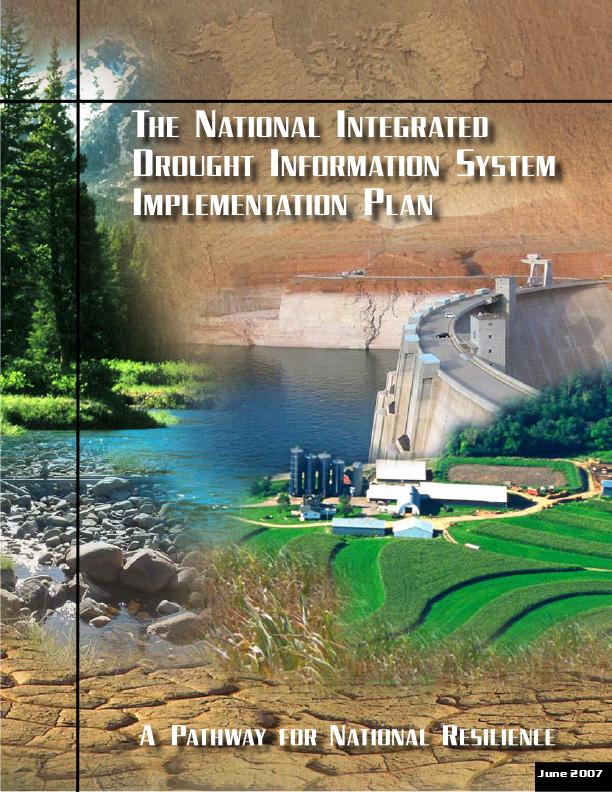The National Integrated Drought Information System Implementation Plan
Recognition of drought risks in a timely manner is dependent on our ability to monitor and forecast the diverse physical indicators of climatological drought, as well as relevant economic, social, and environmental impacts. The Western Governors’ Association Report (2004) “Creating a Drought Early Warning System for the 21st Century: The National Integrated Drought Information System” made clear that recent and ongoing droughts expose the critical need for a coordinated, integrated drought monitoring, forecasting, and early warning information system.
To fill this need, the National Integrated Drought Information System Act of 2006 (Public Law 109-430) (NIDIS, 2006) was introduced in the U.S. Congress and subsequently signed by the President in 2006. The goal of NIDIS is to improve the nation’s capacity to proactively manage drought-related risks, by providing those affected with the best available information and tools to assess the potential impacts of drought, and to better prepare for and mitigate the effects of drought. Several workshops were held with federal, state, and local agencies, academic researchers, and other stakeholders to develop a pathway for meeting the goals of NIDIS as outlined in the Western Governors’ Report. This plan is the result of deliberate and broad-based input from those workshops and several national, state, and community-level fora.
The NIDIS Implementation Plan is intended to provide pathways and support mechanisms to:
-
Develop the leadership and partnerships to ensure successful implementation of an integrated national drought monitoring and forecasting system at federal, state, and local levels;
-
Foster, and support, a research environment that focuses on risk assessment, forecasting, and management;
-
Create a drought “early warning system” capable of providing accurate, timely, and integrated information on drought
conditions and associated risks at relevant spatial scales to facilitate proactive decisions;
-
Provide interactive delivery systems including an internet portal, as part of the early warning information system, for easily comprehensible and standardized products (databases, forecasts, geographic information system (GIS)-based products, maps, etc.); and
-
Provide a framework for increasing public awareness and educating those affected by drought on how and why droughts occur, and how they impact human and natural systems.


